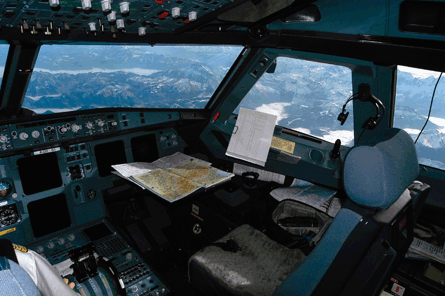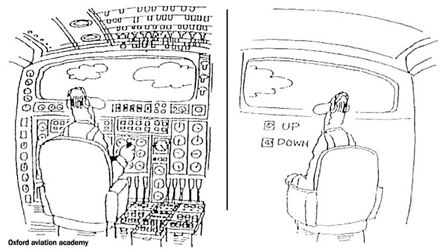All aspects of airline pilot training, from the ab-initio syllabus to the mandatory content of type rating and recurrent training simulator sessions, need a radical review.
Says who? Say many of the main players in the pilot training and commercial air transport industries. But, it appears, the regulators are not ready for this, even if there are signs they know change is in the wind.
The relationship between flight training organisations and flightcrew licensing (FCL) authorities is rather like that of inseparably conjoined twins: they share many of their vital organs, but they have individual personalities. It would be better if these two components of the aviation skills management system recognised they are the left and right lobes of the same brain: each has its individual task and purpose but is pointless without the other.
Without descending into anatomical metaphor, Oxford Aviation Academy's managing director Anthony Petteford made a similar point at Flight International's Dubai Crew Management Conference about the relationship between the airlines and the training organisations. He pointed out that neither can have a future without the other, because the military will never again be the supplier of skills to the airlines that it once was.
 |
|---|
© Oxford Aviation Academy |
Globally there have been a couple of steps along the path to licensing revision. For example, in drawing up standards for the multi-crew pilot licence (MPL), the International Civil Aviation Organisation formally recognised the need for a prescribed, performance-based assessment of pilot skills and knowledge for a specific pilot career path: starting as a co-pilot in a multi-crew aircraft with command as the eventual goal. Speaking about the pilot supply issue at the Dubai conference, the Flight Safety Foundation's Dr Earl Weener said: "Early experience with MPL shows it may produce better low-time pilots, but not quicker or cheaper - and it requires more experienced instructors."
Again, when the European Union countries decided they were going to create a single European pilot licence under the Joint Aviation Requirements for FCL in the 1990s, they attempted to identify the essential information for the JAR FCL examination syllabus from the multiple different national pilot licensing requirements. But, at the time, many argued the new syllabus remained too backward-looking, and now it - and also the JAR FCL skills tests and mandatory recurrent training exercises - need a review to make them relevant to the equipment in use today. That is what Airbus's training department argued at Dubai.
RULE CONSULTATION
Meanwhile, the existing JAR FCL rules on all aspect of pilot qualification have now landed in the European Aviation Safety Agency's in-tray as it moves into regulating operations and FCL. As EASA prepares the JAR FCL requirements for transposition from agreed practices into European law, the consultation process represents an opportunity to drive FCL into the 21st century.
Speaking at Dubai, Airbus's director of operations executive and private aviation Capt Robin Pursey presented a catalogue of what is wrong with the FCL system, particularly regarding type rating and recurrent training. He said that the entry into service of the earliest of the fourth-generation aircraft (the A320) was "not as good as it should have been". This, he says, was because training for the new type was essentially based on traditional training designed for the second- and third- generation types. Pursey says compulsory requirements for type and recurrent training need reviewing, particularly in the light of increasing reliability and systems capability. Mandatory JAR FCL requirements are "basically a box ticking exercise", he insists, heavily weighted towards engine-out flight despite the fact that modern engines much more reliable and the engine-out situation is easier to manage than it used to be.
 |
|---|
© Oxford Aviation Academy |
Pursey and the International Air Transport Association want to see a series of training schedule improvements, including evidence-based programmes adapted by fleet and operation and a greater focus on human performance under normal, but more demanding operations. Human factors are still the most common cause of the majority of serious accidents, Pursey points out, and a more analytical approach will allow non-technical skills to be trained in a more appropriate environment, not necessarily a Level D full flight simulator, allowing more effective training to be completed more quickly. British Airways has recently introduced an advanced training and qualification programme in its Boeing 777 fleet, which gives it some freedom to tailor training requirements according to need and evidence, but Pursey would still like to see the existing mandatory exercises reviewed.
Meanwhile, at the Dubai conference, Oxford's Petteford and the FSF's Weener expressed serious concern about the long-term supply of well-trained pilots. Petteford says the security-locked flightdeck door has put piloting as a career out of sight, and the perception of piloting has suffered as a result. Petteford's thesis is that a successful graduate trainee pilot is the product of three things: desire to fly as a professional, ability, and the financial means to raise about £200,000 ($260,000) to pay for it. Desire is reducing, and the ability to find the finance is rare, he says.
It is up to industry, Petteford says, to raise the profile of piloting as a worthy career.
PROS AND CONS OF THE MULTI-CREW PILOT LICENCE
At Flight International's Crew Management Conference in Dubai in December, the executive director of CTC Aviation Group, Capt Lee Woodward, discussed the advantages and disadvantages of training for the multi-crew pilot licence (MPL) rather than the traditional route to the airlines, the commercial pilots licence (CPL).
Advantages
- The multi-crew pilot licence requires direct airline involvement, and it could be argued that the operator focus in the early stages of training will be beneficial as training will not only be type specific from an earlier stage, but will introduce the pilot to standard operating procedures and the airline's ethos and culture much earlier.
- The course could be shorter and thus we might see a new pilot becoming "line ready" in just over a year from the start of training.
- The greater use of new simulator technology with improved fidelity, and the use of low-cost training devices, is expected to suit airlines and training organisations alike.
- Progressive training with the correct use of competency-based training and assessing will, it is hoped, develop the pilot at a much smoother rate than is sometimes the case in conventional training, but the overall learning curve might be steep.
Disadvantages
- Airline dependency might make it more restrictive for training organisations and individuals. MPL could reduce competitiveness as airlines align themselves to one particular training concern.
- Course failure presents challenges as the regulation does not appear to adequately "credit" pilots who might fail, opt out or be forced out of MPL training, and might want to continue down the conventional route. Significant expense might have been incurred before falling back into conventional training, with little training credit.
- Investment in low-cost training devices could require significant expenditure initially by airlines and training organisations alike.
- Forward planning could challenge an airline. MPL requires commitment from all parties - the individual, the training organisation and the carrier. Historically it has proved to be difficult for airlines to commit to recruitment a long way ahead.
Source: Flight International























